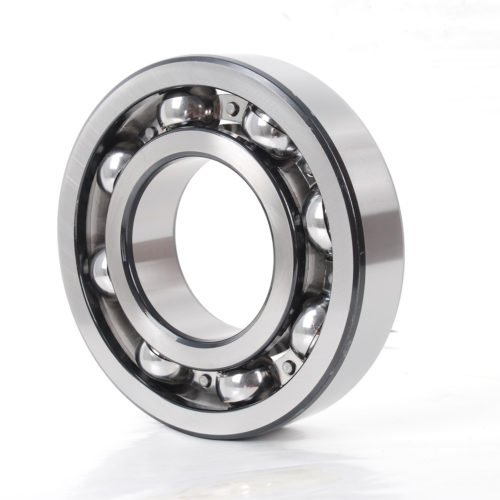A deep groove ball bearing is a type of rolling-element bearing that is used in a wide variety of applications, including electric motors, pumps, and conveyors. This type of bearing is designed to handle both radial and axial loads, and is characterized by its deep, uninterrupted raceway grooves that run around the inner and outer rings of the bearing.
The design of a deep groove ball bearing allows it to support relatively high radial loads, making it ideal for applications where the load is primarily radial. The bearing can also support some axial loads, but it is not designed to handle heavy axial loads.
Here are some key features and benefits of deep groove ball bearings:
High load capacity: Deep groove ball bearings can support high radial loads due to their deep raceway grooves.
Versatile: Deep groove ball bearings are available in many different sizes and designs, making them suitable for a wide range of applications.
Low friction: Deep groove ball bearings have a low coefficient of friction, which helps reduce energy consumption and heat generation.
Easy to install: Deep groove ball bearings are easy to install and require minimal maintenance, making them a popular choice for many different applications.
Long lifespan: Deep groove ball bearings are designed to provide long-lasting performance, even in harsh environments.
Cost-effective: Deep groove ball bearings are relatively inexpensive and provide a cost-effective solution for many different applications.
Overall, deep groove ball bearings are a reliable and versatile option for many different applications, offering high load capacity, low friction, and long lifespan. They are easy to install and maintain, making them a popular choice for many different industries, Deep Groove Ball Bearings suppliers including automotive, aerospace, and industrial machinery.
How do deep groove ball bearings compare to other types of bearings?
Deep groove ball bearings have several advantages over other types of bearings, depending on the specific application requirements.
Here are some comparisons between deep groove ball bearings and other common types of bearings:
Angular contact ball bearings: Angular contact ball bearings are designed to handle both radial and axial loads, but they are better suited for applications where the load is primarily axial. Deep groove ball bearings, on the other hand, are better suited for applications with high radial loads.
Cylindrical roller bearings: Cylindrical roller bearings are designed to handle high radial loads, but they are not as versatile as deep groove ball bearings. Deep groove ball bearings can be used in a wider range of applications due to their ability to handle both radial and axial loads.
Tapered roller bearings: Tapered roller bearings are designed to handle heavy radial and axial loads, but they are not as suitable for high-speed applications as deep groove ball bearings. Deep groove ball bearings are designed for high-speed applications, with low friction and minimal heat generation.
Spherical roller bearings: Spherical roller bearings are designed to handle heavy radial and axial loads in applications with misaligned shafts. Deep groove ball bearings are not designed for misalignment, but they are better suited for applications with high radial loads and less axial load.
Overall, deep groove ball bearings are a versatile and cost-effective option for many different applications, offering high load capacity, low friction, and long lifespan. They are easy to install and maintain, making them a popular choice for many different industries. However, it is important to choose the right type of bearing for each specific application, taking into account factors such as load capacity, speed, and misalignment.
